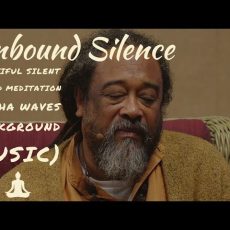The meaning of the word ‘Vipassana’ is insight – to perceive things as they really are, without a veil, without any facade, in their absolute true nature. Practicing Vipassana involves a practical and scientific examination and observation of the self that results in complete purification of the mind and achievement of the highest possible happiness.
The method was rediscovered by Gautama Buddha, on his search to enlightenment. When propagated by him, it helped relieve hundreds of their suffering and pain. Soon it spread over to Burma, Sri Lanka, Thailand and a few other countries. It had the same impact on the people of these countries, as it had on those from India.
500 years later, India lost this technique with the passage of time and so did many other countries. But it was preserved in its pristine sacred form in Burma by a chain of teachers, who were very small in number. Shri S.N. Goenka learned this technique in the year 1955 from the late Sayagyi U Ba Khin of Burma, a renowned teacher of Vipassana. For nearly 14 years Goenkaji received training under his teacher, who wished that the technique should go back to its place of origin i.e. India and help Indians come out of their manifold problems and from there spread its wings to other countries where it could possibly liberate many from pangs of pain.
Goenkaji has made this the motto of his life, and has been actively teaching the technique in India since 1969 and in other countries since 1979. The main centre for the training and practice of Vipassana is the Vipassana International Academy, established in 1976 at Dhamma Giri, on the outskirts of the town of Igatpuri in Nashik district, about 135 kilometres from Bombay. Here ten day regular courses of Vipassana are conducted over the year, attracting thousands of people each year. For more advanced learners, 20, 30 and 45-day courses are also held here.
Adjacent to the Academy at Dhamma Giri is the Vipassana Research Institute which was established to further the spread of Vipassana by promoting research on the Vipassana technique and the Pāli texts in which it has been explained. Research here also aims at furthering the application of the Vipassana technique in fields as health, education and social development.
More Vipassana centres have sprung up in Hyderabad, Jaipur, and Calcutta in India and also in Nepal, New Zealand, France, Australia, the United Kingdom, Japan and in the United States. At least one ten day course is held each month at these centres. Goenkaji has trained and appointed over 400 Assistant Teachers in India and abroad to help him bring his vision to life. The man himself has conducted more than 400 ten-day courses in India and abroad.
And you know the best part? Vipassana is non-sectarian and open to all without any discrimination based on race, caste, religion or nationality. All courses are financed solely by donations from those who have taken a course and experienced its benefits themselves and wish others to benefit in the same way. No teaching faculty makes any profit from the technique. By this policy, the teaching of Vipassana can be spread with purity of purpose and without a hint of commercialism.





